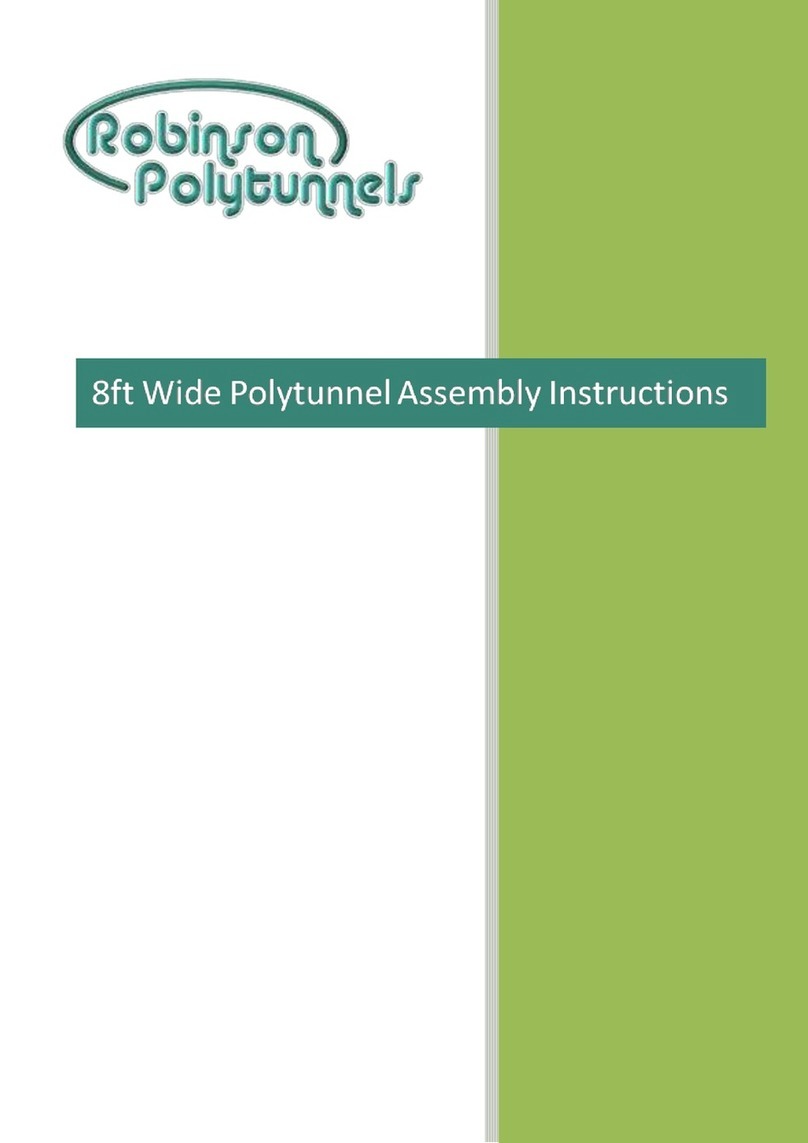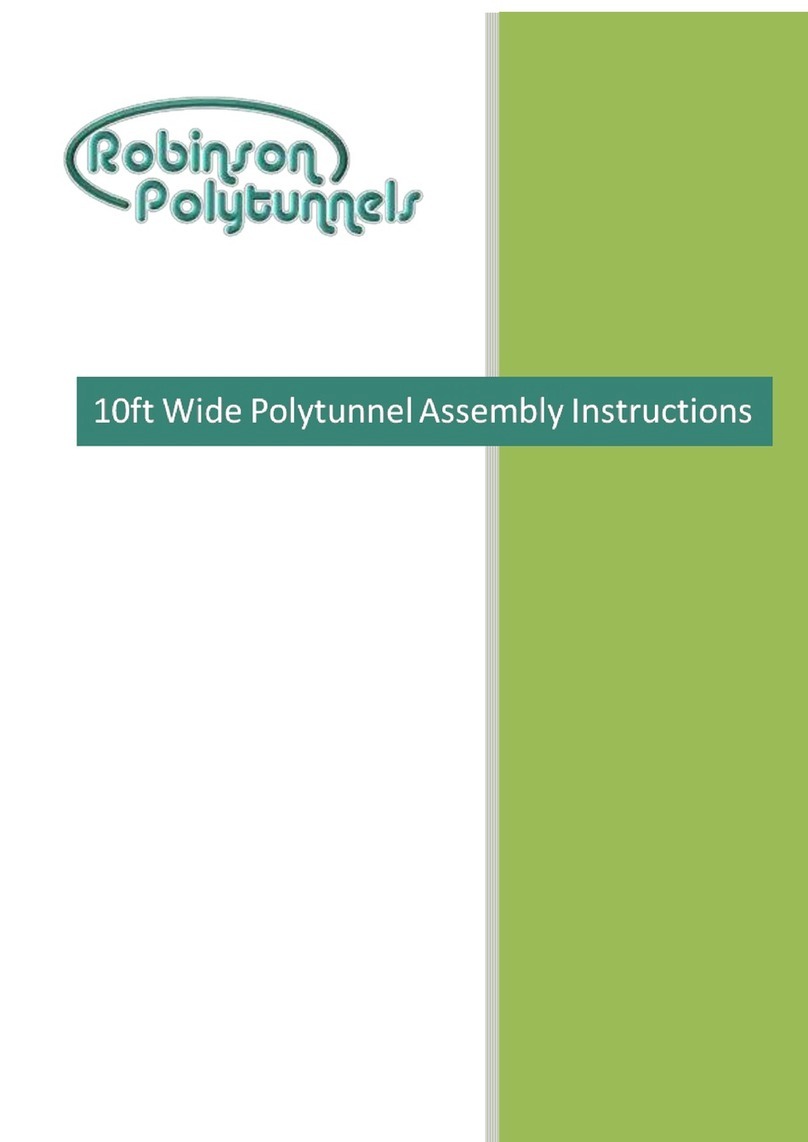
6ft Wide Polytunnel Assembly Instructions
Copyright © Robinson Polytunnels 2009 - 2018 4
2. FOUNDATION TUBES: Option B –Ground Anchor Plates (Suitable for base rail or trenched polythene)
1Set two string lines to the width of the polytunnel
(6ft apart). Ensure they are parallel.
Tip! It’s best to put your polytunnel on a flat, level site.
A fall lengthways is easy to accommodate. A fall
sideways should be limited to about 6” over the
width of the polytunnel.
2Set another string line for the end of the
polytunnel. Ensure the “end” string line is
perpendicular to the “length” string lines.
3Mark the ground at each foundation position, to the outside of the “length” string lines at 5ft centres
until the full length is reached.
4Temporarily remove the string lines so they don’t get in the way whilst digging.
5Dig a hole for each foundation tube, approximately 25cm square x 35cm deep.
6Slot the ground anchor plates onto the bottom end of the
Foundation Tubes. And lock in place with the Starlock
Washers. Starlock Washers are inserted using the short piece
of tube.
a. With the foundation tube upside-down, slot the 6mm
Concrete Tie Bar (steel rod) into the pre-punched
hole in the Foundation Tube.
b. Slot the Ground Anchor Plate onto the bottom end of
the Foundation Tube, to rest on the Concrete Tie Bar.
c. Hold the short piece of tube over the starlock washer
on the bottom end of the Foundation Tube and tap
the short tube with a hammer until the washer is
located on the Foundation Tube, right up to the
Ground Anchor Plate.
7Reinstate the string lines.
8Insert the foundation tube and anchor plate assembly into
the excavated holes, to the outside of the string line. Make sure the foundation tubes are vertical,
touching the string line and spaced at 5ft centres. The foundation tubes should be protruding above
ground by approximately 40cm.
9Backfill the excavated holes, checking that the foundation tubes are still in the correct position. Stamp
on the soil to ensure the soil is well-compacted.
























